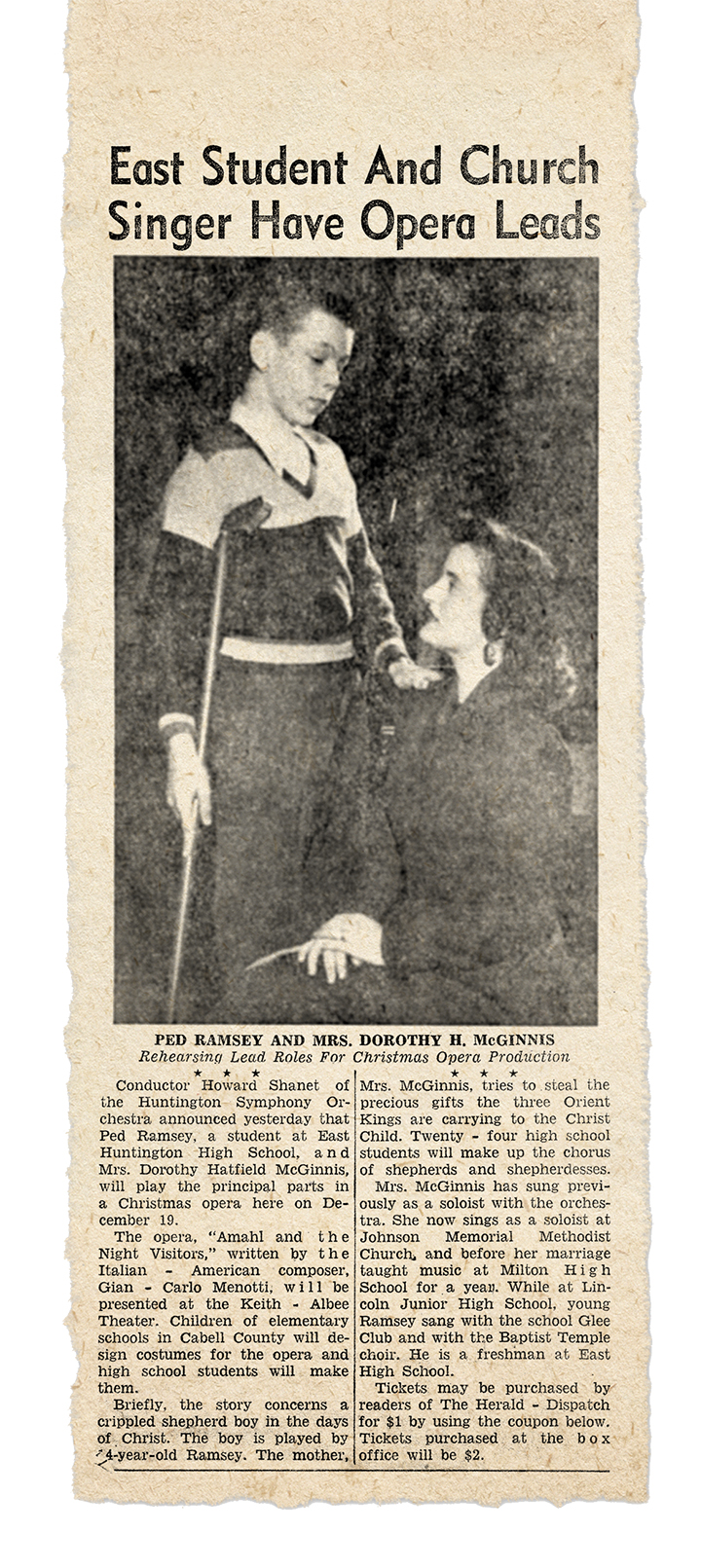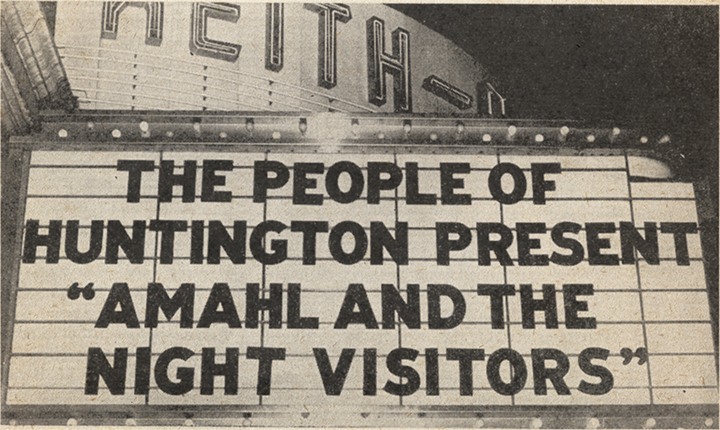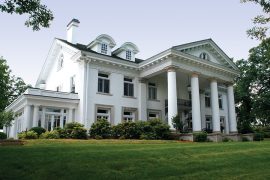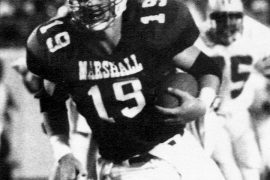By Renee Maass
HQ 81 | SPRING 2013
The People of Huntington Present ‘Amahl and The Night Visitors’” was the wording on the Keith Albee Marquee the night of Dec. 19, 1952. What an evening it was: the first time a serious opera had been performed in Huntington, and what is believed to be the first time Amahl had been performed outside of New York City.
More than 60 years later, this evening is remembered as a tribute to community spirit and enthusiasm. This collaborative spirit that touched so many lives resulted in an event noted for its significant place not only in Huntington’s musical heritage but also in overall music history due to the avant-garde manner in which the opera was produced through the efforts of such a diverse group of Huntingtonians.
In his piece “Children Produced this Opera” published in August 1953 in the Etude magazine, writer George Gotwals described the event as “an experiment in community cooperation that might well serve as a model for similar undertakings elsewhere.” At the time, Etude was a well-respected magazine dedicated to music with a national readership. It was quite the coup for a Huntington, W.Va., production to be covered by a magazine of its reputation.
Etude further described the evening as “a unique experiment in opera production, believed never before to have been tried in the entire history of music, scored a resounding success in Huntington, W.Va. recently when the school children of the whole city designed the sets, costumes and even the choreography for a complete opera, Gian Carlo Menotti’s ‘Amahl and the Night Visitors.’”
Many students across all grade levels were impacted by the innovative initiative of the production. Hands-on projects such as costume and set design required that students research not only the opera itself but also the era in which it occurred. All Cabell County students were given the opportunity to participate. This inclusive spirit resulted in a true community production, perhaps unheard of in other towns.
Amahl and The Night Visitors was commissioned by NBC to be broadcast live Dec. 24, 1951 as not only the first Hallmark Hall of Fame production, but also the first opera performed on TV.

Menotti’s opera tells the story of a disabled boy, Amahl, who lives with his widowed mother near Bethlehem. They are extremely poor and will soon have to resort to begging to provide for themselves. One night there is a knock on the door. Amahl opens it to find three distinguished visitors – the Magi accompanied by a page. They are tired after their long journey seeking the Christ child and ask to rest at Amahl’s house. During the night, Amahl’s mother attempts to steal the gifts the kings intend for Jesus. She is caught taking gold by the page. When the kings understand her motive for the attempted theft, they tell her to keep the gold. But she tries to give it back and is ashamed that she does not have a gift for the child. Amahl offers his only possession – his crutch. At that moment he is healed.
Menotti was good friends with Howard Shanet, conductor of the Huntington Symphony Orchestra at the time. Shanet conceived the idea of the child-driven performance and received Menotti’s enthusiastic permission. Menotti had always instructed that because “Amahl, a child, is the focal figure of the opera…the action, the costuming and the scenery should be interpreted simply and directly in terms of a child’s imagination.”
To bring the opera to Huntington, Shanet became a one-man machine – conductor, music director, producer, stage director, dance director and PR man. Many others had a part in bringing Amahl to Huntington – members of civic organizations, churches and theater groups – but nothing symbolized the community spirit of the production like the work of Huntington’s school children.
Elementary school students were asked to draw their ideas for stage sets and costumes. Junior high students, with the assistance of the Women’s Symphony Committee, sewed the costumes. Senior high students and the Community Players built the stage sets the younger children had designed. First and second graders were also encouraged to create steps for the “Dance of the Shepherds” which is in the middle of the opera. The steps were adapted for the Shepherds’ Chorus.
What is a community production without local talent? All of the roles were filled by Huntington residents. Ped Ramsey, a freshman at Huntington East High School, was tapped to play Amahl. Dorothy Hatfield McGinnis, a young mother herself, portrayed Amahl’s mother. The Magi were played by Paul Dempsey, Kenneth Harbison and Kenneth Marple.
David Becker was the page. According to his wife, Carolyn, Becker has fond memories of the performance. The chorus was formed by 24 high school students – 12 each from Huntington High and Huntington East, dressed as shepherds and shepherdesses.
Marguerite Neekamp-Stein was the vocal teacher and vocal coach for Ped Ramsey. (McGinnis and Dempsey also were students of Stein.) Mary Shepp Mann was the pianist. Sterrett Neale served as drama coach for Ramsey and the entire cast.

McGinnis still lives in Huntington with her husband, Kermit. In 1952, she had performed with the Huntington Symphony Orchestra and was a featured soloist at Johnson Memorial United Methodist Church. Even with this experience she was intimidated by the role of Amahl’s mother (not named by Menotti in the opera).
“There is a tremendous amount of singing with the role, and I didn’t know if I could do it,” McGinnis explains. “The night of the opera I was on stage right after the orchestra played the prelude. I got the first words out and thought, ‘I just can’t do this.’ But I knew that if I just followed the flow of the music everything would be all right. And it was.”
In 1952, the Keith-Albee was still in its splendor. Kermit McGinnis recalls sitting in the audience the night of the performance.
“I was so proud of Dorothy,” he says. “and the Keith was full of people.”
Advance purchase tickets were $1, which is equivalent to $8.86 in today’s dollars – still a bargain.
Mollie McGinnis Hinckley, youngest daughter of Dorothy and Kermit, feels a special connection to the performance.
“It was several years before I was born,” she says. “But I feel like I was there because of hearing Mom’s stories throughout the years. Researching for this article has been an opportunity to really learn about this event. It is so thrilling for me as an adult to see it on the printed page and share this memory with Mom. I am so proud to know she followed her dream.”
McGinnis recalls, “What a special place this was. Nothing was impossible for us. By looking back at the achievement of not only making the opera happen but also receiving recognition in a premier magazine like Etude says something about Huntington and what we were able to accomplish.”





